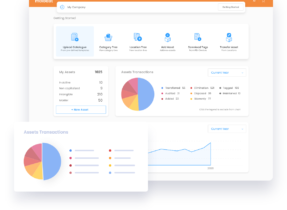Could your business' inventory management do with a review? Are you sure you're employing the best tactics for better operational, warehouse and picking efficiency in your business? Does your inventory system run smoothly and is it easy to stay on top of? Or are you finding that your employees don't seem to know how much stock you have, where certain SKUs are located in your warehouse or what you're about to sell out of? Without an effective, regulated inventory management system in your business, it will be near-on impossible to satisfy your customers, maintain good relationships with your suppliers or to locate SKUs with the speed and efficiency that a modern business demands. The fact is that most businesses could benefit from regularly re-visiting their inventory management system because an inefficient system costs unnecessary money. So, if any of the above resonate with you then you might benefit from our guide to inventory count best practices.

What Happens If You Don't Have an Effective Inventory Management System In Place
Before we move on, let's quickly mention the problems that your business will encounter without an effective inventory management system in place:
- Inability to account for your stock holding in your business because you're not using inventory tracking.
- Slow, laborious warehouse operations.
- Difficulty locating SKUs.
- Overstocked items.
- Understocked items.
- No knowledge of when you're about to sell out of a product.
- Risk attached to replenishment.
- Spending money on unnecessary stock that you may already have.
- A completely inefficient warehousing and logistics' system.
- Theft.
- An inefficient picking system.
Here are some of the best inventory count practices that could improve overall efficiency in your warehouse:
1. Split Your Inventory Using an ABC System
This is a system that helps you to pick your fast-selling products easily as it's about prioritizing your stock into a hierarchy, from the most important SKUs to the least important SKUs. For example, your highly important stock items (such as fast sellers) would be your a) items. Your b) items would be your medium priority items and your c) items are your low priority items – that don't need replenishment as quickly as your a) items. Place your c) items higher up and your a) items lower down – so they're easy to access. By splitting items into a hierarchy, you improve your overall efficiency in your warehouse.
2. Speed up Your Picking Process & Improve Overall Accuracy
The above hierarchy system also helps you to speed up your picking process as your team can easily identify your a), b) and c) items. You should also place your best-sellers closest to your packing area for optimum speed. Ensure that your warehouse space is clear of clutter and tidy so your team can access items quickly, easily and without any danger to themselves. Implement a WMS (warehouse management system) so your team can pick items in order of where to find them. With this, use RFID or inventory barcoding for every item so everything is easy to account for and can be scanned using an inventory mobile application (inventory handheld application) that instantly adjusts quantities. To do this, why not use a specialist inventory management system such as Mojodat Inventory to keep an eye on your stock levels, report overstocks and understocks and alert you as to when you need to place a new order in advance? Whenever you implement a new system, ensure your warehouse team understand any changes to your operations' process so that everyone is on-board.
3. Create Key Performance Indicators for Your Inventory
Every business should have KPIs for each area. For warehousing and picking you need to establish yours and they could include indicators such as carrying costs, write-offs, mark-downs, inventory turnover, lifecycle of products, status of orders, ability to track orders and fill rate. Regularly revisit KPIs to make sure that you're meeting your goals.
4. Have a Batch-Tracking System
This involves a process that helps you trace a set of items that were produced at the same time and used the same materials, for example, perishable goods using similar ingredients or electrical items using similar componentry. This not only helps you to identify problems with certain goods, but it also helps you to distribute a set of items together. Additionally, it helps you to track goods from production right through to consumer.
5. Use an Inventory Management System For Reordering
In today's fast-paced world, inventory management is no longer effective when completed using pen and paper – or even Excel spreadsheets as neither are designed for the volume of information required. An effective, automated Inventory Management software system such as Mojodat will help you to reorder accurately as it stores all SKU information as well as other pertinent information together. This type of system alerts you in advance and can even trigger orders on your behalf, so you don't have to worry about lack of stock or over stocks. It does it all for you.
6. Keep a Small Stock Surplus
This is more effective if you don't have perishable goods but it's always wise to keep a small surplus amount of inventory to ensure that you can always fulfil orders. Without having a small surplus in your inventory, you could lay yourself open to lost revenue, losing customers and this could impact your market share.
7. Work Out Your Inventory Turnover
This means working out your rate of inventory turnover and by doing this, you'll understand the demand for your products as well as how much out-of-date stock you have. You'll also understand where you need to sell more, order more and get rid of stock another way (e.g., through waste). If you need to increase inventory turnover, you could re-examine your pricing, get rid of all of your out-of-date stock, re-evaluate your forecasting and redistribute slow-selling stock.
8. Perform Regular Stock Takes
This is an essential best practice and involves an inventory audit. Regular manual counts will help you to understand any inaccuracies. With an inventory management system, your manual stock take should perfectly reflect your reporting – a manual stock take every few months will immediately flag up any discrepancies.
9. Reduce Your Inventory
Along with a stock take you should also perform an inventory reduction and in doing so, you should find your lowest levels of inventory without risk of overstocks or understocks. The best way to do this is to examine your lead times and reduce your minimum order quantities, get rid of out-of-date or obsolete stock and perform regular reporting to understand your exact stock position. To help you perform this effectively, utilize a top-performing inventory management system such as Mojodat Inventory.
In Conclusion
Finally, the premium system for all of the above is best inventory management software, Mojodat Inventory. This system utilizes the most up-to-date technology for a truly streamlined business with efficient operation processes that free up your employees' time to concentrate on other important business-related tasks. No matter what warehouse management software you use in your business, performing regular inventory audits perhaps once a quarter will ensure that your processes run smoothly and flag any stock issues that need dealing with before they grow into insurmountable problems.
Subscribe to read the full article below.

